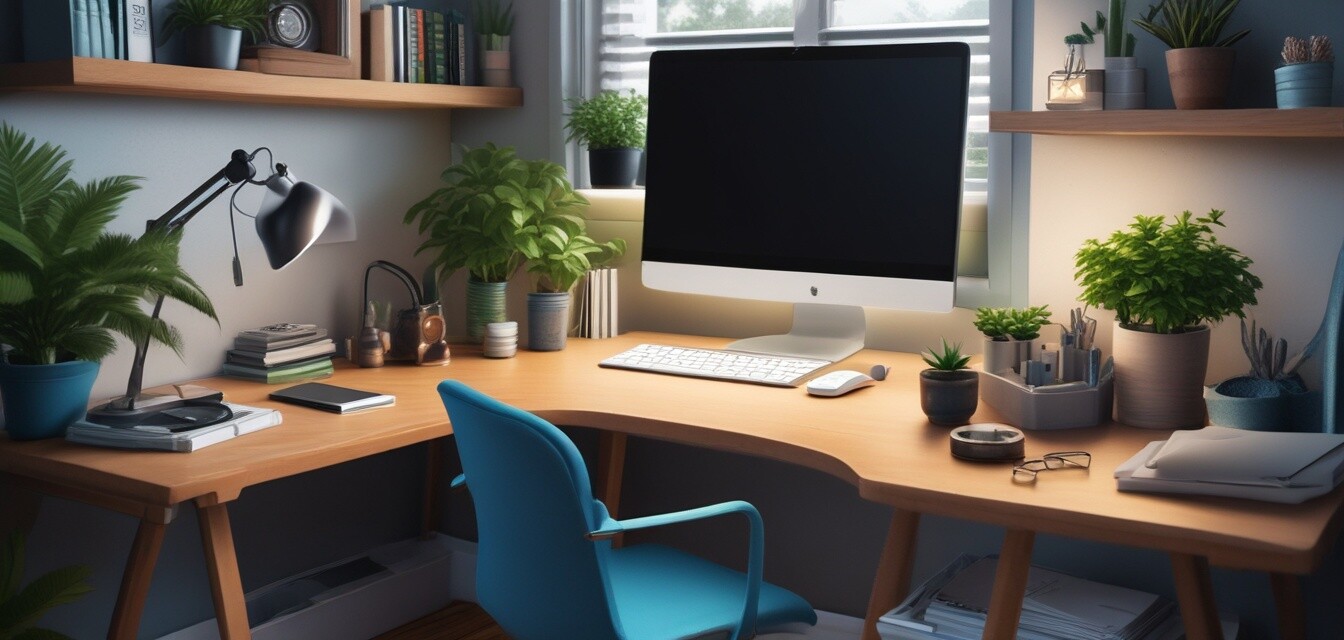
Utilizing Color Psychology in Your Home Office Design
- Color psychology plays a vital role in creating an effective and motivating workspace.
- Different colors can enhance focus, creativity, and relaxation.
- Choosing the right color scheme can improve workplace aesthetics and functionality.
Creating the perfect home office is more than just about furniture and technology; it involves **considering the impact of color on your productivity and mood**. In this article, we’ll explore how color psychology influences your work environment and how you can use it to design a workspace that enhances focus and creativity.
Understanding Color Psychology
Color psychology is the study of how colors affect behavior and emotions. For your home office, the chosen colors can influence your mood and energy levels. Let’s review some common colors and their associated psychological effects:
| Color | Effects |
|---|---|
| Blue | Promotes focus and calmness |
| Green | Encourages balance and tranquility |
| Yellow | Inspires creativity and optimism |
| Red | Enhances energy and urgency |
| Purple | Stimulates creativity and imagination |
| Gray | Neutral and calming but can feel dull |
Choosing the Right Color Scheme
Incorporating color psychology into your home office design can be achieved through thoughtful selection of color schemes. Consider these strategies:
1. Create a Focal Point
Choose a bold color for an accent wall or major piece of furniture to anchor the room. This focal point will serve as inspiration during work hours.
2. Use Complementary Colors
Combine colors that are opposite each other on the color wheel, like blue and orange, to balance energy and calmness. This can create a dynamic space while maintaining clarity.
3. Consider Natural Light
Evaluate how much natural light enters your workspace when selecting colors. Lighter tones can help reflect light, while darker tones absorb it.
Color Schemes to Enhance Focus
Here are some color schemes that can help enhance focus in your home office:
| Color Scheme | Description |
|---|---|
| Blue & White | This combination is calming, promotes focus, and creates a clean environment. |
| Green & Earth Tones | Brings a sense of tranquility and connection to nature, promoting relaxation. |
| Yellow Accents on Gray | Boosts creativity and energy without overwhelming the space. |
| Warm Neutrals with Purple Touches | Creates an inviting atmosphere with stimulating notes for creativity. |
Incorporating Color through Accessories
If painting the walls isn’t an option, there are other ways to introduce color into your home office:
- Desk Accessories: Use colorful organizers, mouse pads, or pen holders.
- Art and Prints: Hang artwork that resonates with your preferred color scheme.
- Textiles: Use colorful cushions or rugs to bring warmth and color to the setup.
- Plants: Green plants not only add color but also purify the air.
Maintaining Balance and Harmony
While it’s essential to connect colors to productivity, remember that **too much color can be distracting**. Strive for a harmonious balance by mixing neutral tones with pops of color. This will provide enjoyment without overwhelming your senses.
Example Layouts for Inspiration
Here are some example office layouts that take color psychology into account:
- Cozy Nook: A small desk in a corner painted light blue with green plants and warm lighting.
- Modern Tech Hub: A sleek black desk with white walls and a big vibrant yellow art piece.
- Natural Light Oasis: A desk placed next to large windows framed by light gray curtains alongside rich green furnishings.
Conclusion
Designing your home office using color psychology can profoundly influence your productivity and mood. By incorporating the right color schemes and understanding how different colors affect your state of mind, you can create a balanced, inviting, and motivating workspace. For more home office inspiration, check out our Setup Inspiration category, where we share a variety of ideas and layouts. Consider extending your workspace by exploring Office Furniture or improving your tech setup with Docking Stations.
Pros
- Enhanced focus and productivity.
- Increased creativity and motivation.
- Better mood management through color choices.
Cons
- Choosing the wrong colors can lead to distractions.
- May require repainting or redecorating costs.